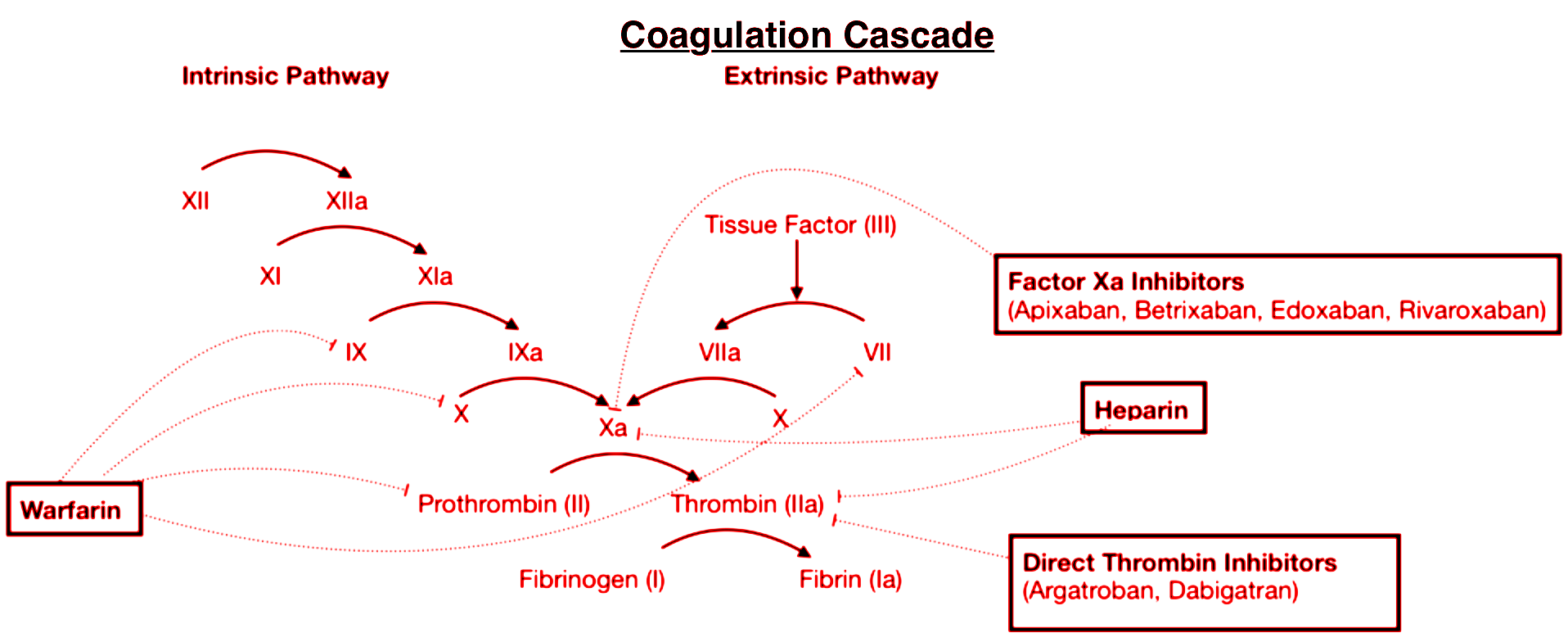
The factor which initiations the intrinsic pathway of blood clotting and triggers cascade reaction is
(a) Anti-haemophilic factor
(b) Christmas factor
(c) Stuart-Power factor
(d) Hageman’s factor
Answer
569.1k+ views
Hint: Intrinsic pathway is when damage takes place within the walls of the blood vessels. Several factors are released by the platelets, endothelium, etc. The factor which initiates the intrinsic pathway is also known as Factor XII.
Complete Step by Step Answer:
Blood coagulation or clotting is the process of conversion of an open wound to a close wound by blocking the opening with dead elements that are trapped in thread-like structures known as fibrins. Fibrins are formed from inactive fibrinogens by the enzyme thrombin. Thrombins are also formed from inactive prothrombin that is catalyzed by the enzyme thrombokinase. The enzyme thrombokinase is formed by a series of linked enzymatic reactions known as the cascade process. This cascade process occurs in two ways i.e. intrinsic pathway and the extrinsic pathway.
The initiation of the intrinsic pathway is done by Factor XII or Hageman’s factor.

So, the correct option is ‘Hageman’s factor’.
Additional information:
Anti-hemophilic factor: This is also known as Factor VII. The deficiency of this factor leads to Haemophilia A.
Christmas factor: This is also known as Factor XI. This factor reacts with factor VII to continue the cascade reaction. Its deficiency causes Haemophilia B.
Stuart-Power factor: This is also known as Factor X. It is the first member of the common pathway of the intrinsic and extrinsic pathways.
Note: There are 13 blood clotting factors present in our body. Calcium ions are essential for the clotting of blood. Platelets are also called thrombocytes. These are produced from megakaryocytes present in the bone marrow. Clotting factors that are released from the damaged tissue lead to the initiation of the extrinsic pathway.
Complete Step by Step Answer:
Blood coagulation or clotting is the process of conversion of an open wound to a close wound by blocking the opening with dead elements that are trapped in thread-like structures known as fibrins. Fibrins are formed from inactive fibrinogens by the enzyme thrombin. Thrombins are also formed from inactive prothrombin that is catalyzed by the enzyme thrombokinase. The enzyme thrombokinase is formed by a series of linked enzymatic reactions known as the cascade process. This cascade process occurs in two ways i.e. intrinsic pathway and the extrinsic pathway.
The initiation of the intrinsic pathway is done by Factor XII or Hageman’s factor.

So, the correct option is ‘Hageman’s factor’.
Additional information:
Anti-hemophilic factor: This is also known as Factor VII. The deficiency of this factor leads to Haemophilia A.
Christmas factor: This is also known as Factor XI. This factor reacts with factor VII to continue the cascade reaction. Its deficiency causes Haemophilia B.
Stuart-Power factor: This is also known as Factor X. It is the first member of the common pathway of the intrinsic and extrinsic pathways.
Note: There are 13 blood clotting factors present in our body. Calcium ions are essential for the clotting of blood. Platelets are also called thrombocytes. These are produced from megakaryocytes present in the bone marrow. Clotting factors that are released from the damaged tissue lead to the initiation of the extrinsic pathway.
Recently Updated Pages
Why are manures considered better than fertilizers class 11 biology CBSE

Find the coordinates of the midpoint of the line segment class 11 maths CBSE

Distinguish between static friction limiting friction class 11 physics CBSE

The Chairman of the constituent Assembly was A Jawaharlal class 11 social science CBSE

The first National Commission on Labour NCL submitted class 11 social science CBSE

Number of all subshell of n + l 7 is A 4 B 5 C 6 D class 11 chemistry CBSE

Trending doubts
Differentiate between an exothermic and an endothermic class 11 chemistry CBSE

10 examples of friction in our daily life

One Metric ton is equal to kg A 10000 B 1000 C 100 class 11 physics CBSE

Difference Between Prokaryotic Cells and Eukaryotic Cells

State the laws of reflection of light

Explain zero factorial class 11 maths CBSE




